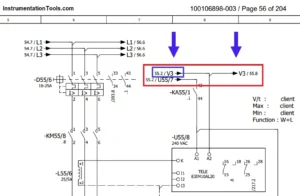Advanced Interpretation of Electrical Drawings
Turbines & Rotating Equipment

The Advanced Interpretation of Electrical Drawings course is designed to provide in-depth training on reading, understanding, and interpreting complex electrical drawings and schematics. Electrical drawings are essential for professionals in the electrical industry as they provide critical information about electrical systems, components, and connections.
The course covers the following key topics:
Advanced symbols and notations: Building upon the basics of electrical symbols, the course delves into more advanced symbols and notations commonly used in electrical drawings. Participants will learn to identify and interpret symbols for various electrical components, such as transformers, circuit breakers, motors, and control devices.
Schematic diagrams: Understanding the structure and layout of schematic diagrams. Participants will learn how to interpret and follow the flow of electrical circuits, including power distribution, control circuits, and interlocks. Emphasis will be placed on identifying connections, understanding the logic of circuits, and troubleshooting based on the schematic diagram.
Wiring diagrams: Exploring wiring diagrams that provide detailed information about the physical wiring connections between components. Participants will learn to decipher wiring diagrams to understand the routing of wires, cable sizes, and connection points. They will also learn about wire numbering, color codes, and wire labeling conventions.
Control circuit diagrams: Understanding control circuit diagrams that illustrate the interconnection and operation of control devices, such as relays, contactors, push buttons, and timers. Participants will learn to interpret control circuit diagrams to understand the sequence of operation and the logic behind control systems.
Electrical panel layouts: Examining electrical panel layouts that depict the physical arrangement of electrical components within control panels or switchboards. Participants will learn to interpret panel layouts to identify terminal blocks, circuit breakers, disconnect switches, and other devices within the panel.
Reading specifications and schedules: Learning to extract relevant information from electrical specifications and schedules, such as equipment ratings, conductor sizes, and installation requirements. Participants will understand how to correlate the information in the specifications with the electrical drawings.
Troubleshooting techniques: Developing troubleshooting skills based on electrical drawings. Participants will learn to use drawings as a reference to identify potential faults, locate components, and trace electrical circuits to diagnose and resolve problems effectively.
By the end of the course, participants will have a solid understanding of gas turbine and compressor control principles, enabling them to effectively operate, monitor, and troubleshoot control systems. This course is suitable for engineers, technicians, and operators involved in the operation and maintenance of gas turbines and compressors.

If you would like further information about this course or have any specific questions, please feel free to contact us directly or send us an email.!!!!!!!!
Contact us for a quote or in case of any urgent queries please send us an email on: [email protected]
we will get back to you right away!